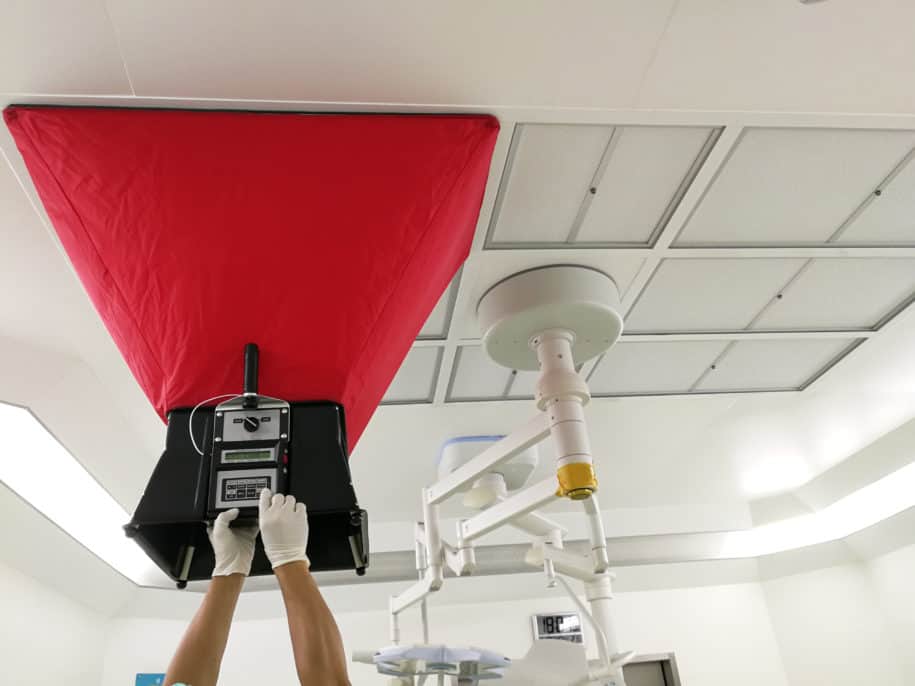The fast-moving nature of the Covid pandemic has created significant challenges for facility managers. Building occupants want to understand how the building they’re working in impacts their potential exposure to the Corona virus.
This interest as led to a lot of discussion, often speculative, of building ventilation parameters that may impact the risk of Covid transmission. Parameters that have been identified of interest for assessing Covid risk include the air change rate[i], relative humidity[ii], the number of people in rooms[iii], and the use of innovative air cleaners[iv] for reducing the number of airborne particles in a space. It is important to note that all of these measures have limited data to assess their value with.
These discussions range from twitter threads[v] to blog postings[vi] to spreadsheet models[vii] to peer reviewed articles[viii] discussing various questions related to building operations. Some of these discussions are based on peer reviewed literature; others on scientific intuition. However, few have any real-world data that support their recommendations for building operations.
In face of the wide variety of information quality and options, what steps should facility managers and the EHS staff who support them take? As is the case in many Indoor Air Quality issues, facilities and EHS professionals need to work together to apply scientific concepts to specific locations including classrooms, labs, and offices.
Doing this requires collecting real world data about these spaces in an organized way. The information available for a particular facility will depend on the age of the facility, the type of control system used by the ventilation system, and the technical resources available to gather and analyze information.
For this reason, EHS staff will need to plan carefully which data is most important in making these risk assessments and systematically collect it. For example, specific data about air change rates, average relative humidity, size and shape of specific rooms and their expected occupancies may be needed to apply risk models in a useful way. Collecting this data enables EHS professionals to develop a control banding system appropriate to the spaces and risks of concern[ix]. These control bands will provide guidance to facility operators as to best practices in the variety of spaces found in most buildings.
The EHS profession’s decades long history of working on Indoor Air Quality concerns has demonstrated that well-organized data can go a long way to answer questions about health and safety in the workplace. These questions can be expected to continue as we proceed into the unknown territory of Covid management in 2021.
SafetyStratus’s Inspections & Observations module allows for development of free form data collection that can be used to feed data into a Covid specific dashboard.
SafetyStratus’s Dashboard and Analytics module can be an important tool in organizing facility data in order to present useful information to stakeholders in your buildings.
For more details: Click here & Contact SafetyStratus Now
AUTHOR BIO

Ralph Stuart, CIH, CCHO is the Environmental Safety Manager at Keene State College in Keene, NH. He has over 30 years of experience in addressing Indoor Air Quality concerns and optimizing laboratory ventilation for safe energy conservation. He is the past chair of the American Chemical Society’s Committee on Chemical Safety.
[i] See, for example, USA Today article Ventilation and air filtration play a key role in preventing the spread of COVID-19 indoors https://www.usatoday.com/in-depth/graphics/2020/10/18/improving-indoor-air-quality-prevent-covid-19/3566978001/
[ii] Op-ed: Humidity can aid in the fight against COVID-19 https://www.hsph.harvard.edu/news/hsph-in-the-news/op-ed-humidity-can-aid-in-the-fight-against-covid-19/
[iii] CDC’s advice about space occupancy can be found at https://www.cdc.gov/coronavirus/2019-ncov/community/office-buildings.html
[iv] See ASHRAE information at https://www.ashrae.org/technical-resources/filtration-disinfection
[v] See, for example, the Twitter hashtag #COVIDisAirborne
[vi] See, for example, COVID-19: Calculating aerosol infection risk yourself https://medicalxpress.com/news/2020-11-covid-aerosol-infection.html
[vii] See https://www.isiaq.org/docs/Risk_Tool_Webinar-Tools_summary.pdf for a summary description of 12 of these models
[viii] For example, Transmission of SARS‐CoV‐2 by inhalation of respiratory aerosol in the Skagit Valley Chorale superspreading event https://onlinelibrary.wiley.com/doi/10.1111/ina.12751
[ix] See, for example, Identifying general laboratory ventilation requirements using a control banding strategy https://www.sciencedirect.com/science/article/abs/pii/S1871553213005896



